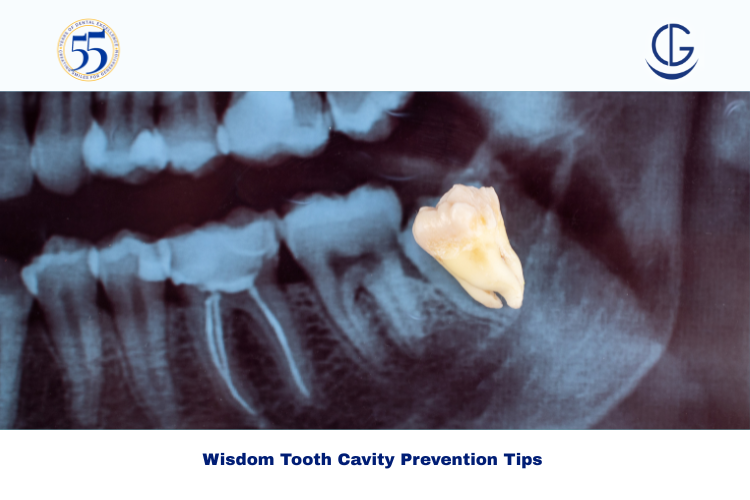Schedule Appointment




Cavities with wisdom teeth are quite common – especially because of these molars difficult to reach, because of their position at the end of the dental arch. At Dr Gowd’s Dental Hospital in Hyderabad, we see many patients who have decay in these areas simply because effective brushing and flossing techniques may not be reaching these areas effectively. The bright side is that cavities in wisdom teeth can be avoided with effective tools, techniques and habits.
In this post, you’ll learn step-by-step brushing and flossing methods, how to maintain oral hygiene for partially erupted wisdom teeth, and why professional care matters.
A wisdom tooth cavity occurs just like any other cavity, from bacteria feeding on leftover food particles, producing acids that erode enamel. However, wisdom teeth are more susceptible, because:
A smaller brush head lets you reach behind the molars without straining your jaw. Soft bristles prevent gum irritation, especially around partially erupted wisdom teeth.
How to do it:
Pro Tip: An electric toothbrush with a round oscillating head often does a better job cleaning behind the last molar.
Brushing straight won’t allow you to reach back grooves. Rotate the brush slightly toward the cheek side and then slight toward the tongue side to get all angles for plaque removal.
After you have brushed normally, rotate your brush vertically and sweep downward (for upper teeth) or upward (for lower teeth) behind the last molar. This motion will release trapped debris.
Flossing is non-negotiable for wisdom teeth — even if it feels awkward at first.
These tools help you navigate tight spaces behind wisdom teeth, especially if you have braces or dental bridges.
How to do it:
A water flosser is a game-changer for flushing out food particles behind the wisdom teeth.
Many people skip flossing if they don’t feel discomfort — but by the time pain starts, a wisdom tooth cavity might already be forming.
If there are persisting signs of pain, swelling or tenderness in your wisdom tooth area, make an appointment with your dentist as soon as possible. At Dr Gowds Dental Hospital, we perform the following:
Cavity-proofing is all about routine cleaning that is thick and thorough.
And most importantly — don’t stop getting your check up done. It can save you from discomfort and avoidable expenses down the line to have an expert to lean on for advice and corrective actions to keep things in good repair.
Using a toothbrush with an extra-small head, brush twice daily, floss behind the wisdom teeth using a floss threader or water flosser attachment, and using an antibacterial mouth rinses.
Wisdom teeth are difficult to clean where they are located, they are often partially impacted, and they can also trap food under the gum flap or flap(s), which is ultimately a risk factor for decay.
Yes! A water flosser can help rinse food debris and plaque behind the molars, and especially in the areas that may be difficult to floss.
You should see your dentist if you have pain that lasts longer than two days, you experience swelling, or if you have any signs of decay on your tooth.
Yes. We provide specialized and professional treatment at Dr Gowds Dental Hospital in Hyderabad, India for cavities involving wisdom teeth in the form of cleaning, filling and extraction.